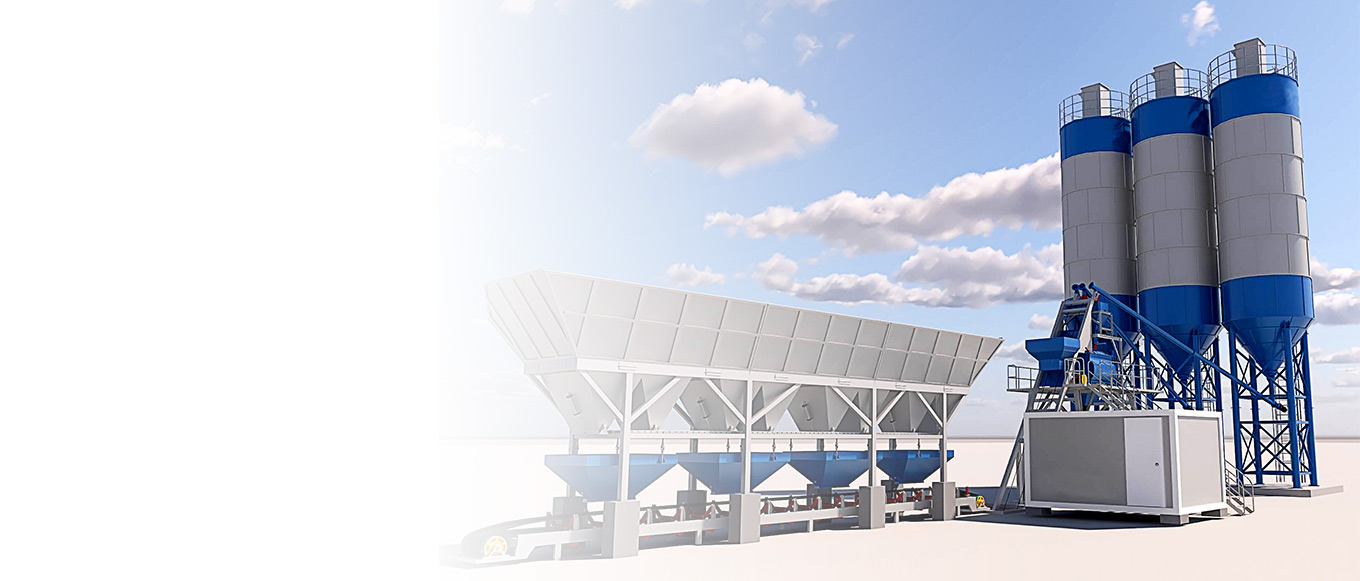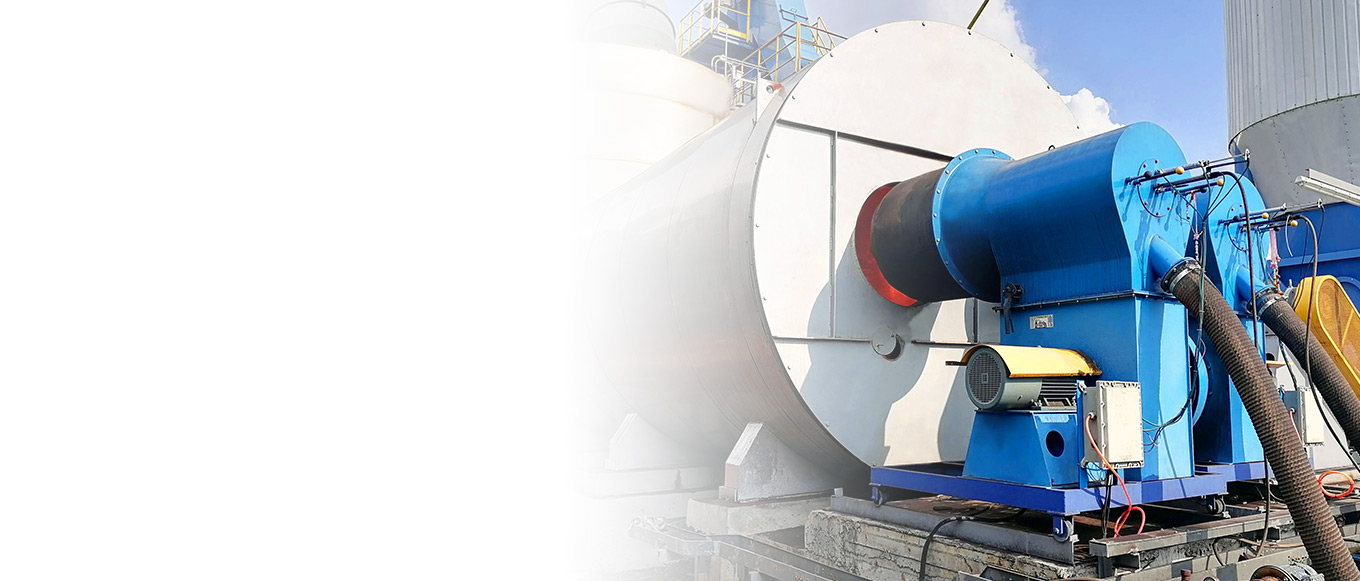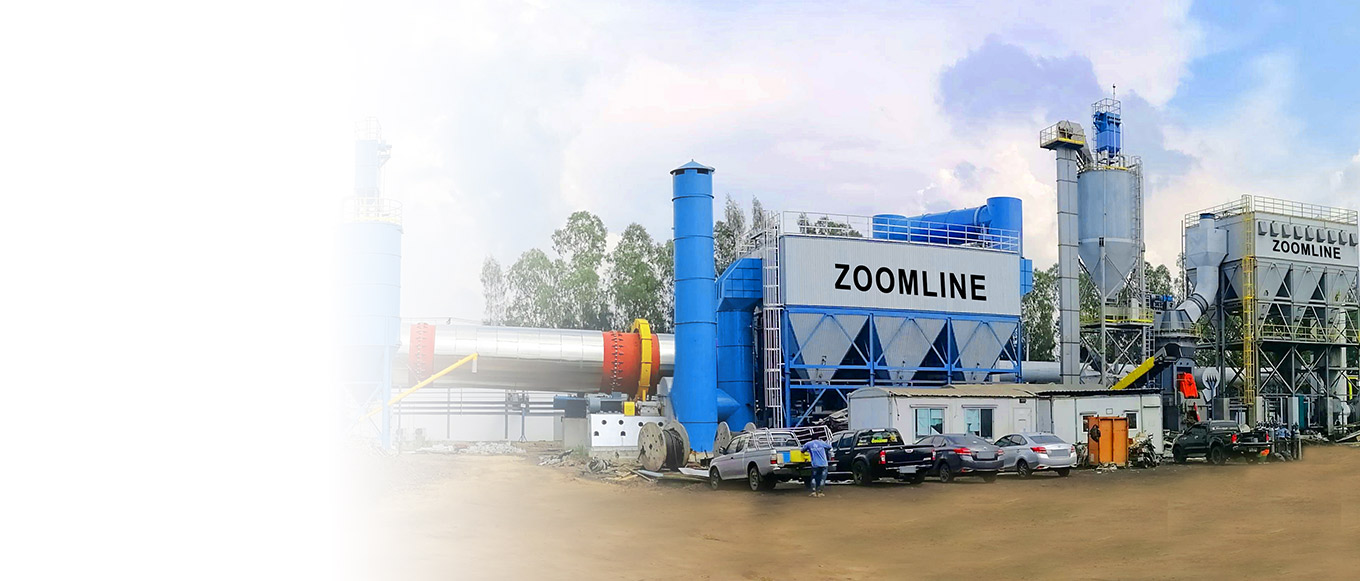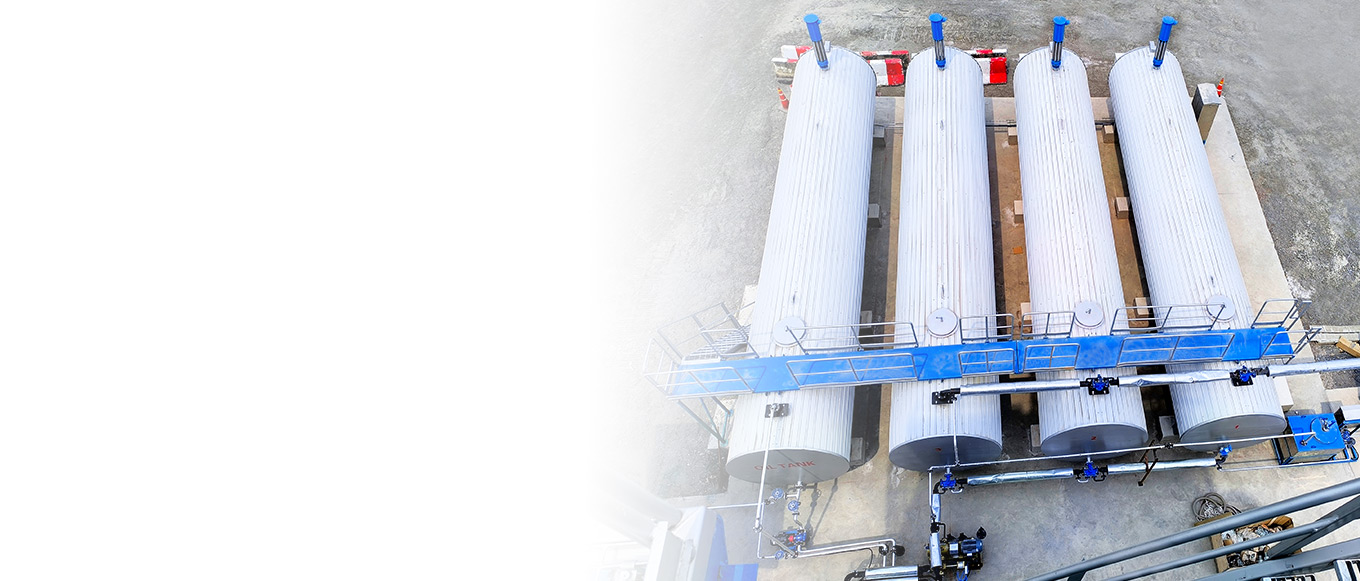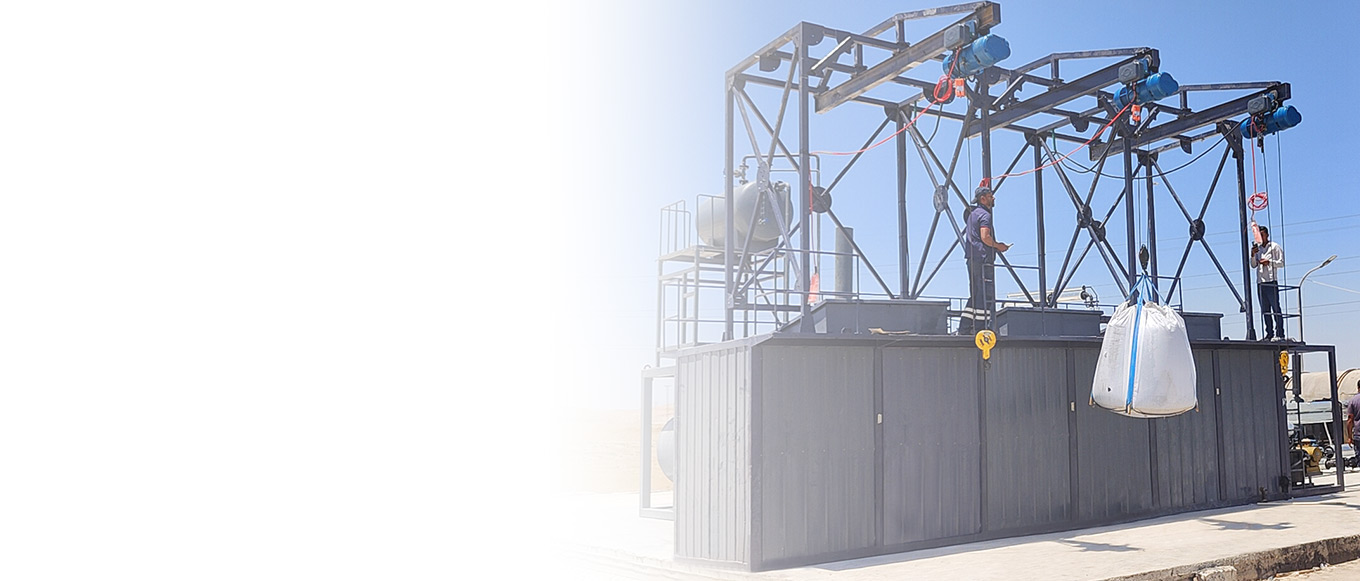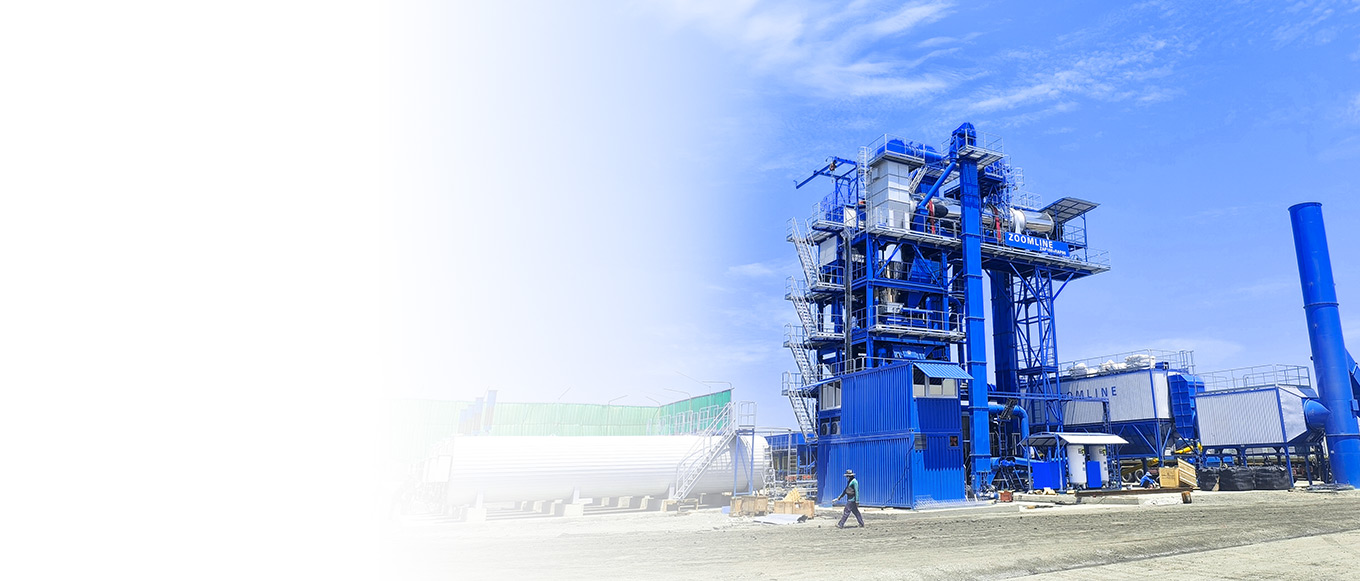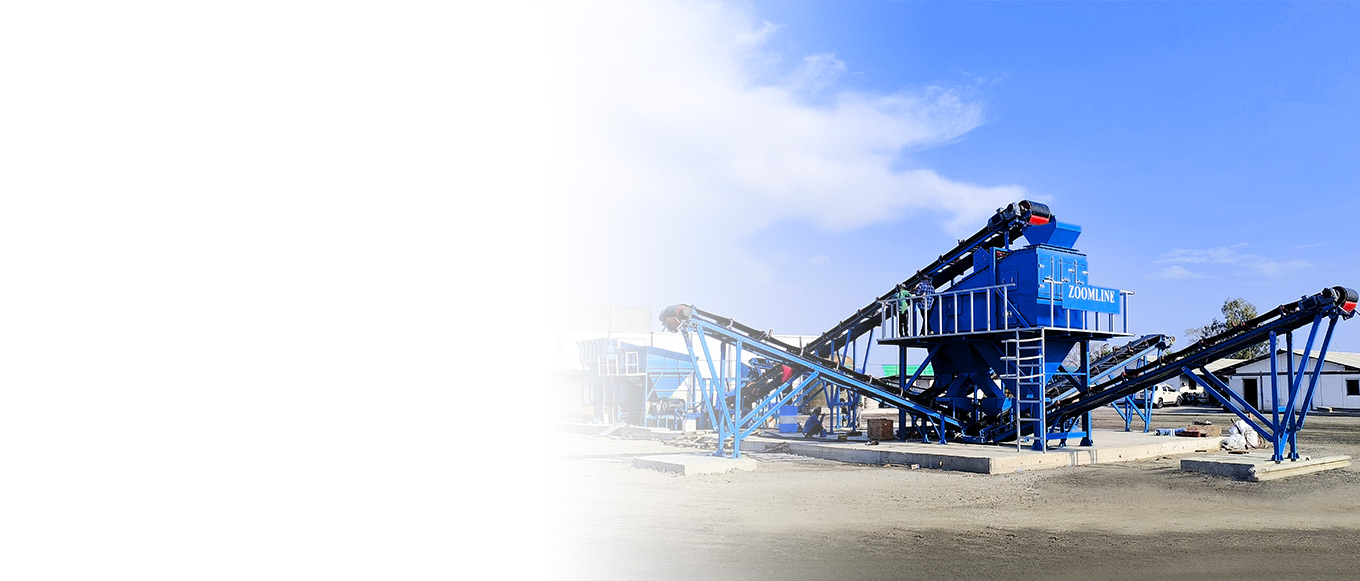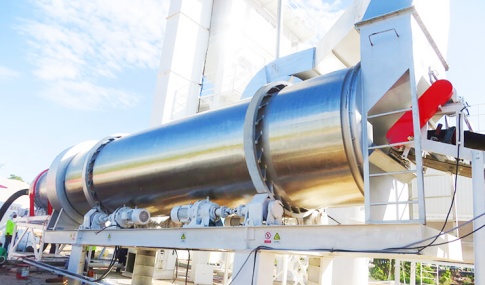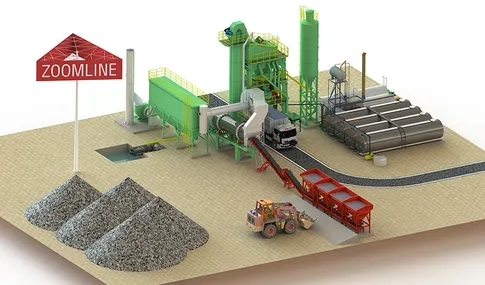In the asphalt production industry, peak season sees equipment operating at high loads with no time for comprehensive maintenance. Conversely, the off-season brings a sharp drop in asphalt demand and production stagnation, with low equipment usage frequency—making it the prime time for maintenance activities.
Preventive maintenance holds significant importance for asphalt mixing plants. From a production perspective, it enables early detection of equipment hazards, preventing production halts due to failures during peak seasons and avoiding economic losses from order delays and customer attrition. From an equipment management standpoint, regular maintenance slows down wear and aging, extends service life, reduces corporate equipment replacement costs, and generates greater economic benefits.
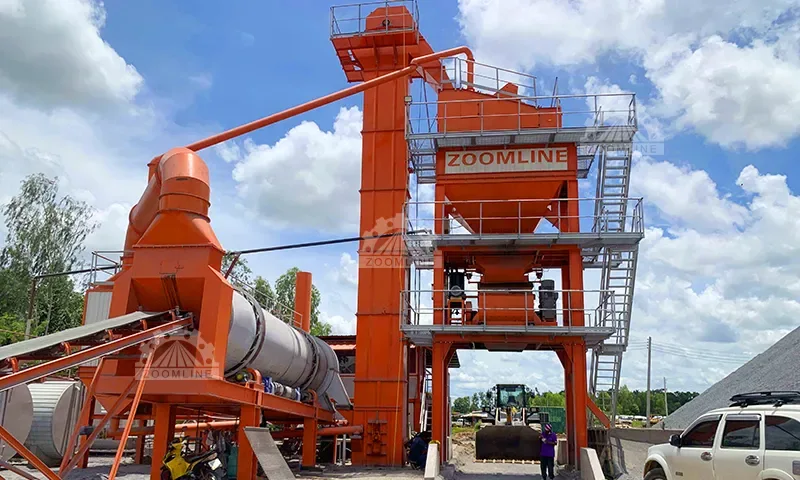
Understanding Off-Season Maintenance for Asphalt Mixing Plants
Defining the “Off-Season” in Asphalt Production
The “off-season” for asphalt production is not fixed, as it is influenced by factors such as geography, climate, and construction project cycles. In northern regions, winter’s low temperatures make asphalt pavement construction difficult and quality control challenging, with the off-season typically spanning November to March. Southern regions experience milder winters, resulting in a shorter off-season, usually from December to February. Additionally, when road projects are nearing completion or new projects have not commenced, a sudden drop in asphalt demand can also create an off-season.
Common Maintenance Challenges During Off-Season Shutdowns
During off-season shutdowns, asphalt mixing plant maintenance faces four core challenges: equipment, personnel, spare parts, and technical expertise. Equipment-wise, metal components are prone to rusting due to moisture, while rubber parts age and crack. Personnel-wise, complacency can lead to perfunctory maintenance. Delays in spare parts supply hinder the replacement and repair of major components. Insufficient technical capabilities within enterprises also impede maintenance tasks that rely on specialized skills and equipment.
Developing a Strategic Off-Season Maintenance Plan
Creating a Phased Maintenance Schedule
Developing a scientific maintenance plan is central to off-season equipment upkeep. Begin by organizing technicians to conduct a comprehensive assessment of equipment operational status, pinpointing issues precisely to determine maintenance tasks. Then break down tasks by priority and complexity, clearly defining timelines and responsible parties for each phase to ensure orderly progress.
For example, maintenance can be phased as follows: – Initial Phase (Weeks 1-2): Focus on cleaning surface and internal dust, debris, and residual asphalt. – Mid-Phase (Weeks 3-6): Inspect critical components like drying drums, burners, and dust collection systems; promptly repair or replace worn parts. – Final Phase (Weeks 7-8): Complete equipment lubrication, debugging, and trial runs to ensure performance meets standards. Additionally, the maintenance schedule should include buffer periods to flexibly address unexpected situations and ensure timely completion of tasks.
Prioritize Maintenance of Critical Components Based on Wear Level and Operating Time
Different equipment components exhibit varying degrees of wear, operating hours, and impact on overall operation. When developing maintenance plans, critical components should be prioritized.
First, classify equipment components to identify critical parts such as drying drums and burners. Utilize operational logs and on-site inspections to track wear levels and operating durations of key components. Prioritize maintenance for severely worn, long-operating components with significant impact—e.g., mixing blades that wear rapidly due to prolonged material contact and affect mixing quality require immediate repair or replacement. Postpone maintenance for components with minimal wear and short operating histories, though regular inspections remain essential.
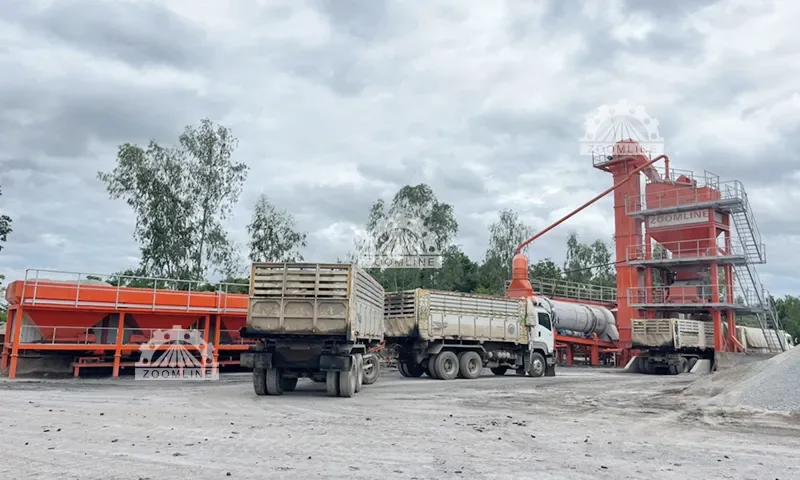
Conduct a Comprehensive Equipment Inspection
Key Inspection Areas
Drying Drum and Burner System: Inspect the drying drum for liner wear, detachment, weld cracking, and operational smoothness; examine burner flame, combustion status, fuel supply, and components (nozzles, ignition electrodes).
Dust Collection System and Filter Bags: Inspect for air leaks in the dust collector housing and evaluate fan operation. Check filter bags for damage, clogging, and seal integrity to prevent excessive dust emissions.
Mixing Tower and Agitator Blades: Verify structural stability and secure connections of the mixing tower. Examine agitator blades for wear, deformation, and loose connections to ensure uniform mixing.
Cold Material Silo and Conveyor Belt: Inspect the silo interior for wear, arching, and gate flexibility. Check the conveyor belt for damage, misalignment, tension, and idler operation.
Asphalt Storage Tank and Piping: Inspect the tank for corrosion, leaks, insulation, and temperature control. Check piping for blockages, leaks, valve flexibility, and insulation to prevent asphalt solidification.
Identifying Early Signs of Component Fatigue, Corrosion, and Misalignment
During equipment inspections, promptly recognizing early abnormalities such as component fatigue, corrosion, and misalignment is crucial for preventing equipment failures.
Early signs of component fatigue manifest primarily in two ways:
– Surface micro-cracks often appear in stress-concentration areas like bearing housings and gear tooth roots.
– Abnormal vibration and noise during operation serve as critical early warning signals.
Early corrosion signs include rust spots, pitting, and peeling on component surfaces. Damaged coatings on metal parts make them susceptible to corrosion from air moisture and oxygen exposure. Non-metallic components like rubber and plastic may exhibit aging, hardening, or discoloration.
Early signs of component misalignment primarily manifest as changes in relative positioning, such as bearing clearance issues, abnormal gear meshing, or conveyor belt deviation. During inspections, problems can be promptly identified by observing operational status and measuring dimensional and positional deviations.
Upon detecting early signs of fatigue, corrosion, or misalignment in components, appropriate measures must be taken immediately—such as repairs or component replacement—to prevent further escalation of failures.
Clean and Lubricate All Major Components
The Importance of Thorough Cleaning During Downtime
During downtime at asphalt mixing plants, thorough equipment cleaning is critical. Dust, debris, and residual asphalt accumulated during operation not only impair heat dissipation and accelerate aging and wear, but solidified asphalt can also clog pipelines, valves, and other components. Dust and debris entering moving parts further exacerbate wear and cause malfunctions. Therefore, thorough cleaning is a critical step in equipment maintenance.
Methods for Removing Residual Asphalt, Dust, and Blockages
Removing Residual Asphalt: Employ a combination of mechanical and chemical methods. Scrape asphalt from equipment surfaces using scrapers and wire brushes; flush pipelines with high-pressure water jets. Spray environmentally friendly asphalt cleaners to soften stubborn asphalt before removal, ensuring proper personnel protection.
Dust Removal: Sweep equipment surfaces with brooms and cloths; use compressed air to blow out internal and hard-to-reach areas. Control air pressure to prevent damage to components and implement dust control measures to avoid contamination.
Debris Removal: Treat based on debris characteristics. Clear solid debris with wire tools; soften hardened asphalt lumps with heat before removal. Take care to protect components during operation.
Recommended Lubrication Points and Intervals to Prevent Friction Damage
Proper lubrication is crucial for minimizing friction damage and extending equipment lifespan. Below are recommended lubrication points and intervals for key asphalt mixing plant components:
Drying Drum Support Bearings: Lubricate the bearing interior. Apply grease every 200 hours and replace grease every 1000 hours.
Agitator bearings: Lubricate the interior of the bearings. Apply grease every 150 hours and replace grease every 800 hours.
Conveyor belt drum bearings: Lubricate the interior of the bearings. Apply grease every 300 hours and replace grease every 1500 hours.
Various Gearboxes: Lubricate the interior of the gearbox. Check oil level every 500 hours and replenish as needed. Replace lubricating oil every 2000 hours.
Valve Lead Screws: Lubricate the screw surface every 100 hours.
When performing lubrication tasks, select appropriate lubricants as needed, maintain clean lubrication points to prevent contamination, and strictly adhere to lubrication intervals to avoid equipment failures caused by improper lubrication.
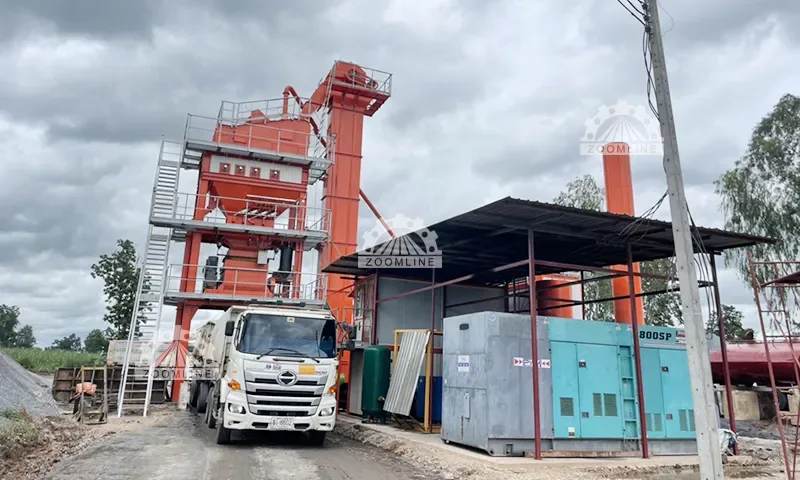
Replacing Wear Parts and Upgrading Key Systems
Wear Parts Requiring Priority Replacement
During the operation of asphalt mixing plants, certain components are prone to wear and damage due to prolonged exposure to friction, impact, high temperatures, and other factors. These components are referred to as wear parts. The following wear parts require priority replacement:
Blades and Mixing Paddles: As critical components for material crushing, conveying, and mixture blending, these experience rapid wear due to constant contact with materials. When wear exceeds standards, crushing and mixing efficiency is directly compromised, necessitating prompt replacement.
Bearings: As vital moving components supporting rotating shafts and reducing friction, bearings are susceptible to wear and fatigue damage during operation. Immediate replacement is required upon detecting abnormal noises, increased vibration, or excessive temperature rises to prevent equipment failure.
Screen Mesh: Responsible for screening sand and gravel to remove impurities and non-compliant materials. Prone to damage and clogging during use, screen mesh must be replaced promptly when damage exceeds acceptable limits or severe blockages occur, as these compromise screening quality.
Filter Bags: As the core of the dust collection system, filter bags gradually become clogged and lose efficiency over time. When resistance reaches specified limits or damage occurs, they must be replaced promptly to maintain effective dust removal.
Conveyor Belts: Responsible for material transport, these belts are prone to wear and tear during operation. If damage, severe misalignment, or unadjustable tension occurs, timely replacement is essential to ensure conveying efficiency and safety.
Benefits of Proactive Component Replacement Over Waiting for Failure
Proactively replacing vulnerable components rather than waiting for failure offers significant advantages. First, it prevents production interruptions during peak seasons caused by equipment shutdowns due to component failure. Heavy asphalt production demands during peak periods mean shutdowns result in substantial economic losses. Proactive replacement eliminates potential failures and ensures stable equipment operation. Second, it reduces maintenance costs. Component failures often cause secondary damage to other parts, expanding repair scope. Proactive replacement involves only the specific component, resulting in lower expenses. Third, it enhances equipment efficiency and product quality. Worn components degrade performance, leading to reduced production efficiency and substandard product quality. Proactive replacement maintains optimal equipment condition, stabilizing production output and quality.
Consider upgrading to energy-efficient burners, intelligent control systems, or improved dust collectors
With continuous technological advancement, asphalt mixing plant equipment undergoes constant upgrades. During off-season maintenance, enterprises may consider retrofitting equipment to enhance performance, reduce energy consumption, and minimize environmental pollution.
Energy-efficient burners: Traditional burners consume high energy with low combustion efficiency. Energy-efficient burners utilize advanced combustion technology to fully burn fuel, improving efficiency and reducing consumption. They also minimize harmful emissions, meeting environmental standards.
Intelligent control systems: These systems employ advanced sensors, controllers, and software to monitor and automatically regulate the asphalt mixing plant’s production process in real time. Through this system, operators can promptly monitor equipment status and production data, adjust parameters based on actual conditions to enhance production efficiency and product quality. Furthermore, the system enables remote diagnostics and maintenance, reducing operational costs.
Enhanced Dust Collectors: Featuring new filtration materials and structural designs, these collectors deliver higher filtration efficiency with lower resistance. The upgraded dust collector not only effectively collects dust to reduce environmental pollution but also lowers fan energy consumption, improving overall equipment operational efficiency.
When considering equipment upgrades, enterprises should select appropriate solutions based on their actual conditions and requirements. Simultaneously, they must thoroughly evaluate upgrade costs and investment return cycles to ensure the upgrades deliver tangible economic and social benefits.
Training Operators and Maintenance Personnel
Conducting Technical Workshops During the Off-Season
The off-season represents a period of relatively low production activity at asphalt mixing plants, making it the optimal time for training operators and maintenance personnel. Companies can leverage this period to host technical workshops, inviting industry experts and equipment manufacturer technicians to deliver instruction. Content should cover core knowledge including equipment principles, structure, operation, maintenance, and troubleshooting.
These seminars should employ a blended teaching approach combining theoretical instruction, case studies, and hands-on field practice to help operators and maintenance personnel efficiently master specialized knowledge. Additionally, organizing experience-sharing sessions promotes mutual learning and knowledge exchange among participants. This multi-faceted interactive format not only enhances technical proficiency but also reinforces safety awareness, thereby solidifying the foundation for stable equipment operation.
Updating Employees on New Maintenance Techniques and Safety Protocols
As equipment technology evolves and environmental/safety standards upgrade, maintenance techniques and safety protocols for asphalt mixing plants undergo continuous updates. Companies should organize off-season training to ensure employees master the latest maintenance technologies and safety knowledge.
Companies can impart new maintenance techniques to personnel through training sessions, material distribution, and on-site guidance. For instance, they can organize learning sessions using maintenance manuals and training courses provided by equipment manufacturers. For new safety protocols, employees must undergo training and assessments to ensure strict compliance. Additionally, regular evaluations of employees’ maintenance skills and safety knowledge should be conducted to promptly identify and resolve issues, thereby enhancing their capabilities.

Final Trial Run and Start-up Simulation
Necessity of Pre-Peak Season Trial Run
After completing off-season maintenance and before the start of peak season production, conducting a trial run of the asphalt mixing plant is crucial. This trial run comprehensively verifies the effectiveness of maintenance work, identifies any issues during the maintenance process in a timely manner, and allows for corrective actions to ensure the equipment operates normally and stably during the peak season.
Through trial operation, one can verify whether all components are correctly installed and functioning normally, checking for abnormal noises, vibrations, leaks, etc. Simultaneously, it allows testing of key performance indicators such as production capacity, mixing uniformity, and temperature control precision to determine if the equipment meets production requirements. Any issues discovered during trial operation can be addressed with ample time before peak season production, preventing equipment-related disruptions that could impact production schedules and minimize economic losses. Furthermore, trial operation allows operators to familiarize themselves with the equipment’s post-maintenance performance, preparing them for efficient operation during peak season.
Verifying Temperature Accuracy, Production Processes, and Material Quality
During trial operation, inspecting temperature accuracy, production processes, and material quality is critical, directly impacting the asphalt mixing plant’s subsequent production stability and product compliance rate.
Temperature Accuracy Verification: Temperature control in asphalt mixing plants directly impacts mix quality. Key monitoring points include hot air temperature in the drying drum, asphalt heating temperature, and discharge temperature. Compare sensor readings with infrared thermometer measurements to assess temperature control accuracy. When deviations are detected, promptly adjust burner intensity, asphalt heating parameters, or calibrate sensors to ensure discharge temperatures: – 150-180°C for standard asphalt mixes – 160-190°C for modified asphalt mixes
Production Process Inspection: Simulate actual production starting from cold aggregate feeding. Verify conveyor belt speed, aggregate screening, mixing rhythm, and finished product discharge functionality. Prioritize equipment coordination—e.g., matching cold aggregate gate opening with conveyor speed to prevent material buildup or stoppages. Monitor dust extraction system efficiency to mitigate particulate pollution. Address process delays by adjusting parameters or servicing transmission components.
Material Quality Inspection: During trial runs, use raw materials identical to actual production specifications to produce small batches for quality testing. Assess production accuracy post-maintenance by analyzing aggregate particle size distribution (using a sieve analyzer), evaluating deformation resistance (Marshall stability), and measuring void content. If quality fails to meet standards, investigate issues like mixing blade wear, aggregate metering errors, or asphalt spray volume inaccuracies, implementing targeted corrective actions.
Conclusion: Leveraging Proactive Maintenance for Long-Term Production Value
Off-season maintenance at asphalt mixing plants is a strategic deployment impacting equipment lifespan, production efficiency, and costs. By clarifying maintenance value, formulating scientific plans, conducting equipment inspections, performing deep cleaning and lubrication, replacing wear parts, upgrading systems, and supplementing with personnel training and trial runs, enterprises can transform the off-season into a competitive reserve period for the peak season.
In practical terms, preventive off-season maintenance delivers significant economic benefits: By mitigating the risk of unexpected downtime during peak season, a mid-sized asphalt mixing plant avoids losses of 50,000–80,000 yuan per day of downtime. Comprehensive maintenance reduces equipment failure rates by over 60%. Regular maintenance and replacement of wear parts extend equipment lifespan by 3-5 years, reducing capital investment. Upgrading to energy-efficient burners and intelligent control systems not only cuts annual energy costs by 15%-20% but also meets environmental regulations, achieving a win-win for economic benefits and social responsibility.
For asphalt producers, the quality of off-season maintenance directly impacts peak-season production capacity. With the proliferation of intelligent technologies like IoT monitoring and AI predictive analytics, equipment maintenance is evolving from “scheduled inspections” to “precision forecasting.” Yet regardless of technological advancements, the core maintenance logic of “plan-execute-verify” remains constant. Only by integrating off-season maintenance into routine management can asphalt mixing plants ensure efficient, stable operation and help enterprises seize competitive advantages in the market.


